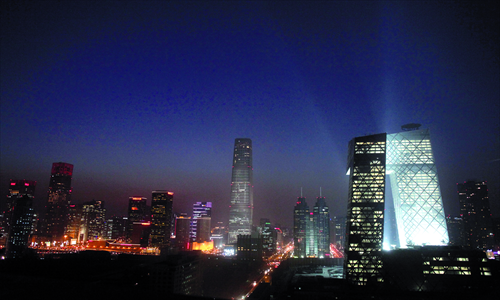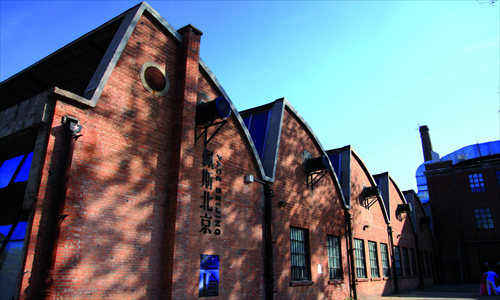Master of arts



In May this year, Beijing was designated as the "City of Design" by UNESCO for its outstanding design industry, joining the organization's Creative Cities Network. he network, aiming to celebrate and preserve cultural diversity against the backdrop of globalization, also includes cities like Berlin, Montreal and Shanghai.
This official recognition, gained after two years' of application, is not the end of the road, but rather the beginning.
To live up to its name, Beijing needs to put more effort into increasing investment in education and fostering designers with international vision and insight.
More platforms for creativity need to be installed, there need to be more design events and in general the public need to be inspired.
Compared with other cities in the network, "Beijing lacks sufficient attention paid to its traditional culture," noted Song Tao, a renowned Chinese furniture designer, who founded the Self Made Company, which seeks to combine traditional form with contemporary culture in its designs.
"And it lacks a clear direction in which the design industry is developing toward," he noted.
So what does Beijing need to do to live up to its City of Design name?
More exchange
Creating more events that will foster dialogue between local and international talent is certainly critical and Beijing is already busy scheduling many design events.
Currently on the events calendar is the New Italian Design 2.0 exhibition, a collection of 300 creative design works from about 100 Italian designers.
The exhibition, which opened mid-July at the World Design Capital building in Beijing and runs until August 20, covers a wide range from product and graphic design to food and jewelry.
The works include a chair called Lazy Football, which has a net attached to its legs, allowing users to play soccer while seated.
Another eye-catching item is a removable bookshelf, which means its owner can carry it around wherever he goes.
"There are many locally grown designers in China, who have an excellent background and skills, but they lack unique insights and perceptions," said Chen Dongliang, director of the Beijing Industrial Design Center (BIDC), who is helping host the Italian exhibition.
Currently there are about 250,000 designers working in Beijing, which has about 20,000 design institutes and companies. The sector has become one of the city's pillar industries and makes up 7 percent of the city's GDP.
With iconic buildings and art districts, Beijing certainly has a reputation within China as a leading design hub. Shanghai might have the famous skyline, but Beijing is where many artists and designers congregate.
However, more work needs to be done.
By hosting the exhibition, Chen hopes to bring a different perspective to local designers and visitors.
"I have been constantly asked about the gaps between Chinese and Western designers. Here in China designers and visitors are more concerned if a design can be put into practice. But more concern should be given to the unique insight a designer shows of an object," noted Chen.
Chen gave the example of a visual correction instrument called Chinese Look, which is on display at the exhibition. Superficially it claims to change Western-shaped eyes into a slant shape that is considered more Chinese, but really it is about changing your perception of another culture.
Designed in China
While Chen sees the problem as Chinese designers sometimes lacking vision, other people believe the problem actually lies in a lack of Chinese designers overall, who are still largely concentrated in a few fields.
China has certainly secured its reputation of "Made in China" around the world, but now the country needs to work on a reputation of "Designed in China."
"In China a lot of people still consider design as either interior decoration or fashion design. In fact design should be viewed from a larger perspective. It is multi-disciplined and crosses industries," said Vittorio Sun, deputy director of Beijing Design Week, an annual event in the capital city committed to the promotion of the design industry in China.
Into its third year, Beijing Design Week will be held in late September in areas including the 798 Art District and Qianmen Dajie. With a number of interactive and engaging exhibitions, seminars and workshops, it aims to engage a wider public.
"In the West, the concept of design is taught as art of discovering, defining and solving a problem," said Sun.
Design should cover a wide range of fields including architecture, fashion, food and industry, and can be used to solve both trivial problems in an individual's life and to serve more significant and influential needs.
In a lot of communities or cities in European countries, design is used to solve ethnical or cultural issues, he noted. As a result, there are new terms emerging from the industry, such as geo-design, entertainment design or travel design.
"Actually everyone can be a designer. When people are complaining about their life, it means that they have spotted the problems and what they need is someone who can help solve them," said Sun.
In order to engage more people, curiosity about design needs to be nurtured. Once people develop a favorable impression of it, they will become dependent on design, Sun explained.
Chinese curator Wei Wei Shannon, founder of Peoples Architecture, a nonprofit group that organizes design-related events in China and the US, agreed with Sun. "It takes time for a new design to be accepted. The most effective way to engage the public with design is to take part in a design event, to communicate with the concept," Shannon noted.
He also agreed with Sun that locally grown designers have yet to be clear about what design actually refers to, and as a result less are entering the field.